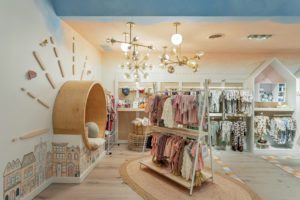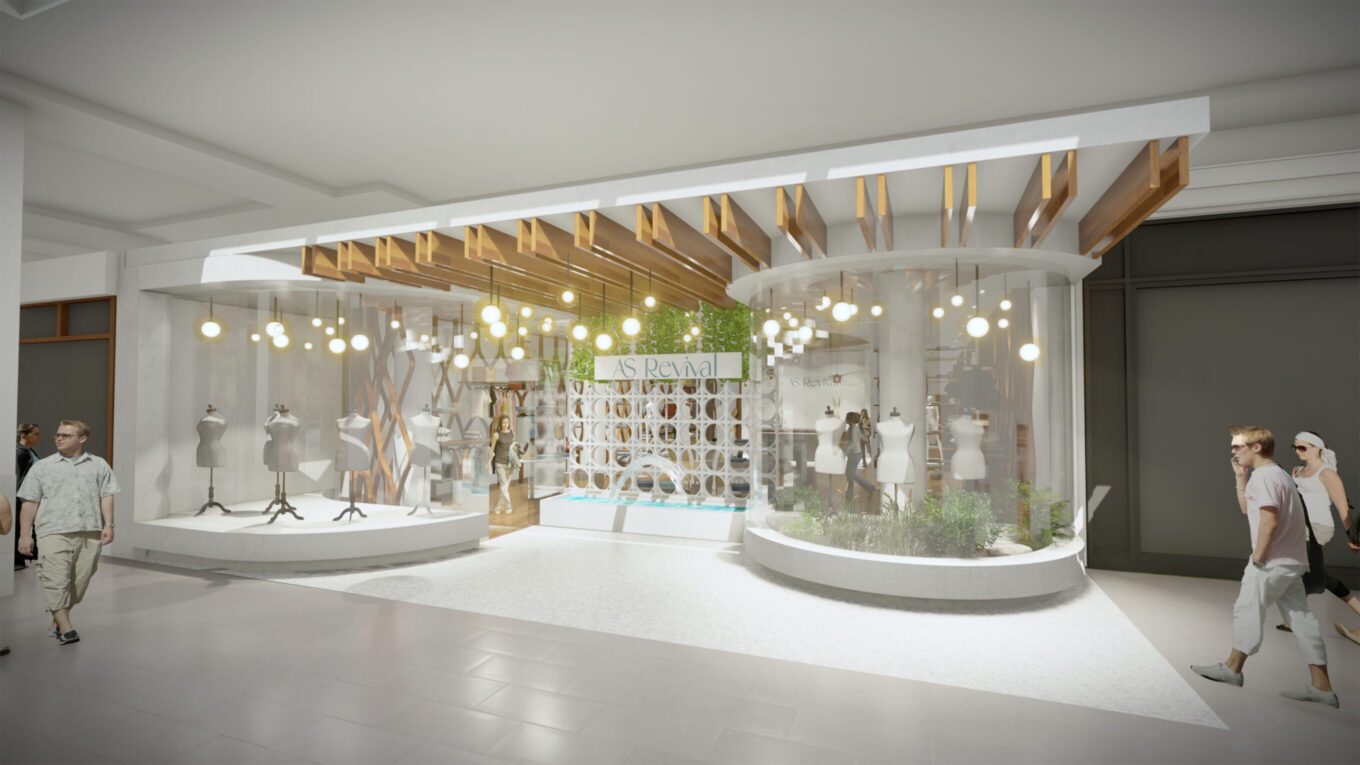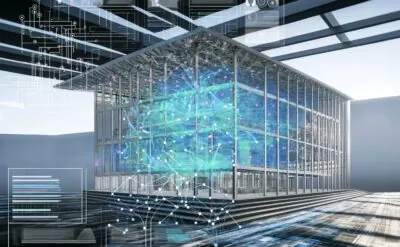There is no room for mediocrity in retail design in today’s economy. A combination of overwhelmed supply chains driving prices higher and inflation reaching a level not seen in forty years is driving the need for retailers to set themselves apart. Creating a memorable guest experience through experiential retail will help to build customer engagement.
In this Insight Article, Anthony Ricciuti, Executive Vice President Retail and Ricardo Avila, Senior Principal, weigh in on the role of retail design in a pandemic recovery and the frosty effects of inflation. They provide context about considerations ranging from business goals to FOMO (fear of missing out), perceived status or affiliation, and the insatiable quest for belonging that inhabits the subconscious of consumers as much as the physical space.
1. Retailer Business Goals
Understanding a retailer’s business goals is the first step in the design strategy process. Before a concept or storyboard is ever developed, the design team needs to know the short and long-term goals to develop a holistic approach. There are significant differences in how a design is conceived based on multiple factors. Is the goal to expand from an online brand to bricks-and- mortar? Or, do physical retail stores require integration to an omni-channel strategy? Consideration must be given to how a retailer’s technology platform or information systems are enabling business intelligence to increase online and in-store sales, whether through a rewards or loyalty program, or pick up and check out convenience. As important, is understanding the growth strategy about factors such as time-to-market, design scalability, building format, and regional versus national or international locations. Defining the scope of the business goals will shape the big picture for experiential retail design.
2. Consumer Shopping Trends
Now the dialogue turns to understanding the consumer and how they engage in-store and online. What is their intent and expectation of the brand? How can the store design enhance the omni-channel strategy from mobile app to in-store purchase? What’s driving the consumer into the physical retail space – product, value, a sense of belonging or a social purpose? This is where the opportunity exists in the layout of retail stores to make choices that will draw people into a physical space. The dialogue with the retail design team must explore current customer behavior and generational attitudes of new customers to realize customer retention and customer acquisition. Putting this all together in an experiential retail store design can be powerful as the brand story is showcased online and, on the sales floor, to create differentiation in the guest experience.

3. Use of Space
Creating an experiential guest experience is an integral part of design thinking. At play is the ability to successfully use depth and height to create an immediate feeling from the moment a guest enters the store. Whether a standalone large retail format or storefront at street level or in shopping center, design concepts and storyboards are developed to help define the purpose of the space and how the consumer will engage within the space. The critical success factor is to give the consumer the feeling of belonging in an environment with a tactile and emotional experience they can’t get online. As the design strategy process is advancing, design technology is embraced to coordinate building systems, lighting – and in some cases, 3D laser scanning, to capture highly accurate as-built site conditions used as a basis for layout and design. This complex work is essential to ensure all elements come together to deliver on the guest experience.

4. Sustainability and Sustainable Design
Sustainable design has moved from a nice-to-have to an imperative as brands of all sizes are using social capital as another way to stand out. The significance of sustainability appeals to all generations in the wake of the global climate crisis. Gen Zs are the most vocal and the most likely to make buying decisions based on the brand’s ability to demonstrate stewardship, corporate responsibility and employee well-being. Creating experiential guest experiences must incorporate a combination of sustainable or repurposed materials, energy efficient mechanical and electrical systems, LED and natural lighting, photovoltaic panels and biophilic elements. For adoptive reuse or second-generation spaces, the ability to leverage existing steel and concrete, as opposed to demolition, helps to significantly reduce the carbon footprint of the building. The overall objective is to meld the brand’s sustainability strategy into the online and physical space so that it is highly visible.
5. Experiential Guest Experience
The culmination of experiential retail design is a place where targeted consumers say, “I need to see what it’s all about”. So, what are examples of this engagement? It is the wide-open views looking into the stores and the window displays with mannequins of all different shapes, sizes and colors that draw shoppers inside. It’s creating a highly designed and inclusive environment where brands in the competitive clothing segments can stand out. It’s experiencing exclusive merchandise in a simulated home-like environment. Try stimulating consumer senses with a sensory strategy. Grocery chains can lead customers through the aisles by their noses and other senses. Grocery departments and aisles are organized in a similar pattern making it easier for shoppers to find what they need. Much thought goes into placing produce sections at the store entrance, high-volume milk and eggs at the far end of the store, and hot kitchens and bakeries with their hunger-inducing aromas where they can guide shoppers through select aisles.
Experiential retail is the new marker. Consumers remember the wow factor that result in a lasting impression in their subconscious that will drive them back. Creating an experiential guest experience will build engagement and loyalty – and that’s critical in an unsettled economy. What’s your experiential retail strategy?



